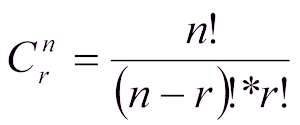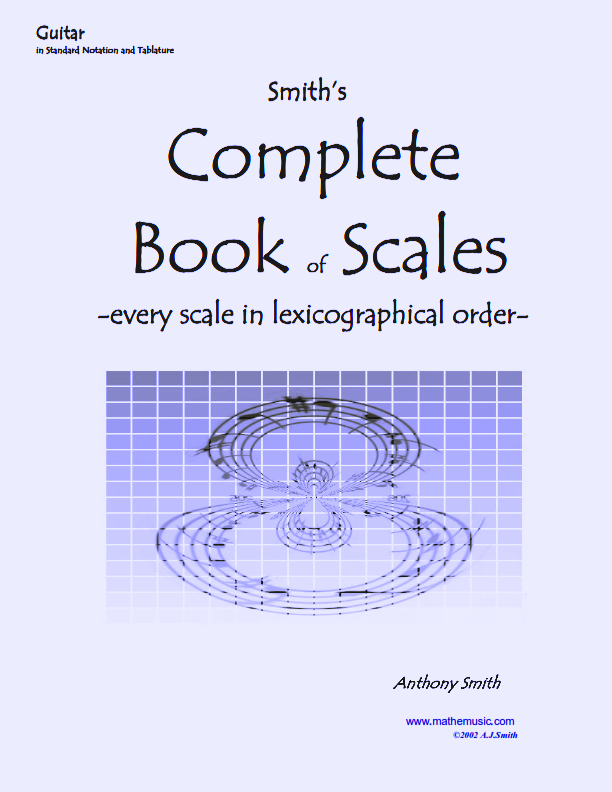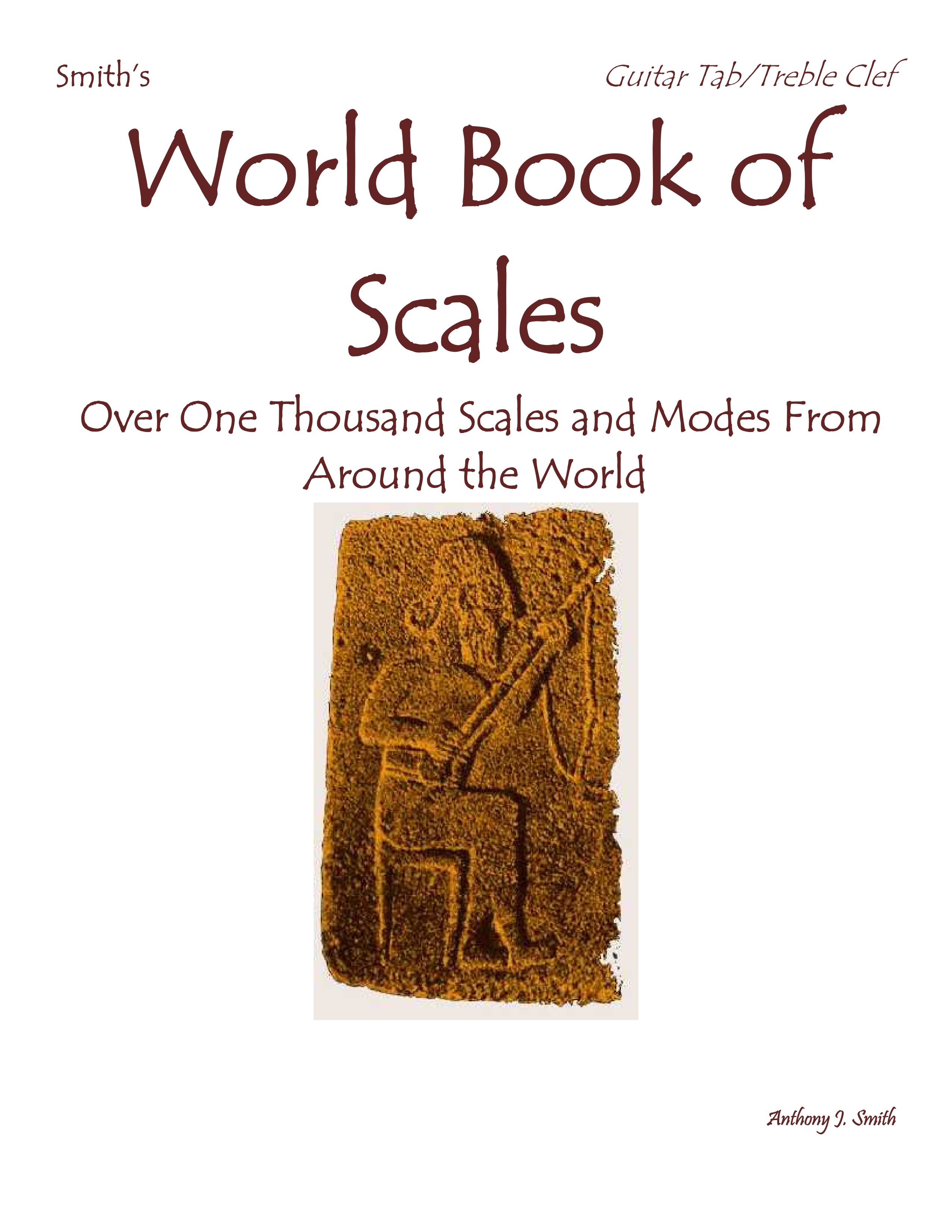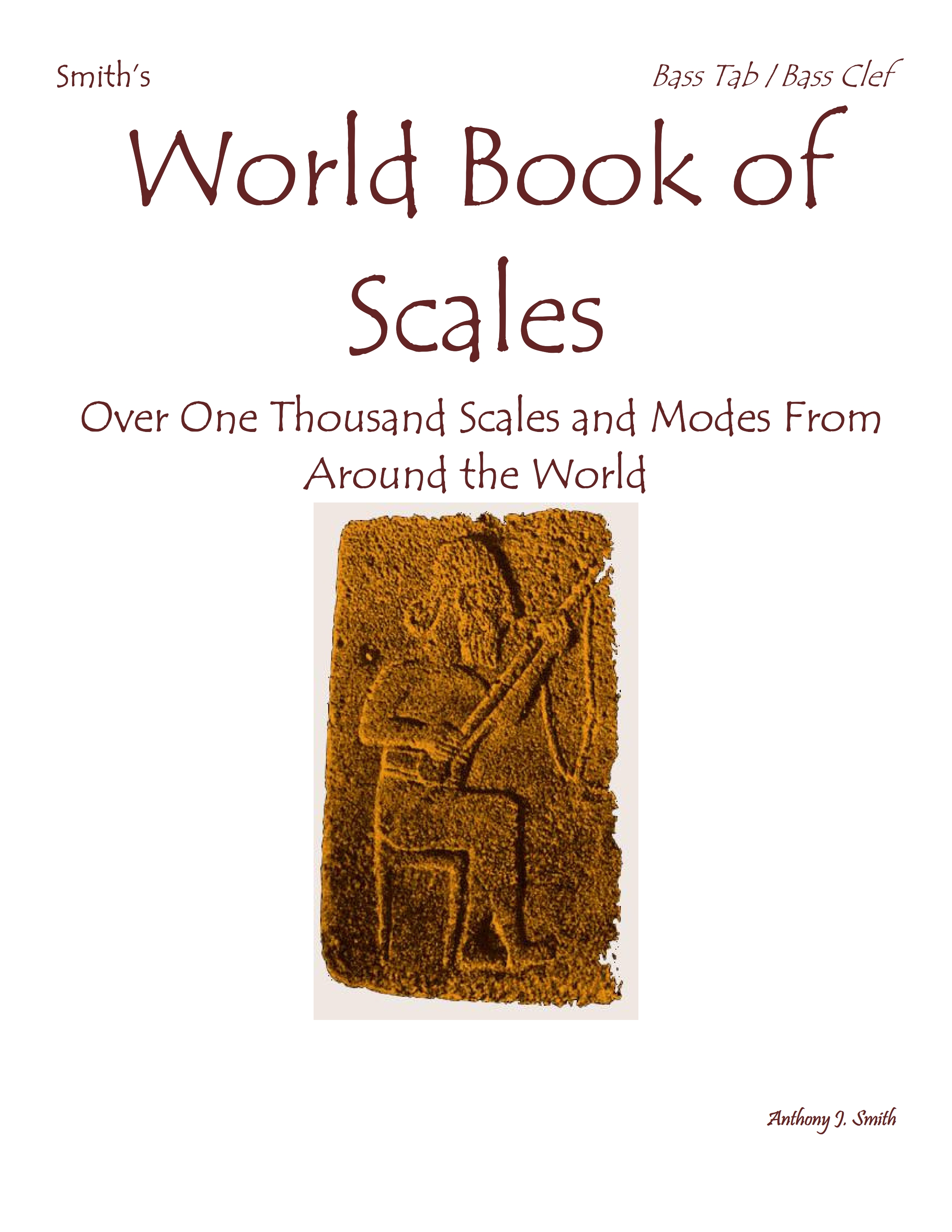A musical scale is a set of notes, usually not arbitrary, of which most notes in a piece of music might be chosen.
There exist many scales with highly distinctive sounds, though some are much more common than others. the term "scale" comes from the latin word 'scala' meaning 'ladder'. Thus a scale is a ladder of notes.
Combinatorics is a branch of mathematics concerning the study of finite or countable discrete structures. Aspects of combinatorics include counting the structures of a given kind and size (enumerative combinatorics), deciding when certain criteria can be met, and constructing and analyzing objects meeting the criteria (as in combinatorial designs and matroid theory), finding "largest", "smallest", or "optimal" objects (extremal combinatorics and combinatorial optimization), and studying combinatorial structures arising in an algebraic context, or applying algebraic techniques to combinatorial problems (algebraic combinatorics).

Scales may also be identified by using a binary system of twelve zeros or ones to represent each of the twelve notes of 12 note equal temperament, assuming the tonic to be in the leftmost position.
For example 101011010101 would represent C-D-E-F-G-A-B, which can be shown as the decimal number 2773. This system includes scales from 100000000000 (2048) to 111111111111 (4095), providing a total of 2048 possible species, 352 unique intervalic scales, and 4096 possible combinations of 0 to 12 notes.
Scales may be shown as semitones (or fret positions) from the tonic. For instance, 0 2 4 5 7 9 11 denotes any major scale such as C-D-E-F-G-A-B, in which the first degree is, obviously, 0 semitones from the tonic (and therefore coincides with it), the second is 2 semitones from the tonic, the third is 4 semitones from the tonic, and so on.

Again, this implies that the notes are drawn from a chromatic scale tuned with 12-tone equal temperament.
Scales are also represented as semitones (or fret positions) between each note.
For instance, 2 2 1 2 2 2 1 denotes any major scale such as C-D-E-F-G-A-B-C, in which the first degree is 2 semitones from the tonic, the third note is 2 semitones from the previous note and so on.
The notes are drawn from a chromatic scale tuned with 12-tone equal temperament.
A musical scale is a discrete set of pitches used in making or describing music
In many musical circumstances, a specific note of the scale will be chosen as the tonic—the central and most stable note of the scale, also known as the root note.
Relative to a choice of tonic, the notes of a scale are often labeled with numbers recording how many scale steps above the tonic they are.
For example, the notes of the C major scale (C, D, E, F, G, A, B) can be labeled {1, 2, 3, 4, 5, 6, 7}, reflecting the choice of C as tonic. The expression scale degree refers to these numerical labels.
Such labeling requires the choice of a "first" note; hence scale-degree labels are not intrinsic to the scale itself, but rather to its modes. For example, if we choose A as tonic, then we can label the notes of the C major scale using A = 1, B = 2, C = 3, and so on. When we do so, we create a new scale called the A minor scale.
The scale degrees of a heptatonic (7-note) scale can also be named using the terms tonic, supertonic, mediant, subdominant, dominant, submediant, subtonic. If the subtonic is a semitone away from the tonic, then it is usually called the leading-tone (or leading-note); otherwise the leading-tone refers to the raised subtonic.
Also commonly used is the (movable do) solfège naming convention in which each scale degree is denoted by a syllable. In the major scale, the solfege syllables are: Do, Re, Mi, Fa, So (or Sol), La, Ti (or Si), Do (or Ut).
Semitones |
Ratio |
|
|
Half Step |
0 |
1:1 |
|
480 |
0 |
1 |
16:15 |
|
512 |
16:15 |
2 |
9:8 |
|
540 |
135:128 |
3 |
|
|
576 |
16:15 |
4 |
|
|
600 |
25:24 |
5 |
|
|
640 |
16:15 |
6 |
45:32 |
|
675 |
135:128 |
7 |
|
|
720 |
16:15 |
8 |
8:5 |
|
768 |
16:15 |
9 |
5:3 |
|
800 |
25:24 |
10 |
9:5 |
|
864 |
27:25 |
11 |
15:8 |
|
900 |
25:24 |
12 |
2:1 |
|
960 |
16:15 |
Semitones |
Name(s) |
Simple Counterpart |
13 |
minor ninth |
minor second |
14 |
major ninth |
major second |
15 |
minor tenth |
minor third |
16 |
major tenth |
major third |
17 |
perfect eleventh |
perfect fourth |
18 |
augmented eleventh |
tritone |
19 |
perfect twelfth |
perfect fifth |
20 |
minor thirteenth |
minor sixth |
21 |
major thirteenth |
major sixth |
22 |
minor fourteenth |
minor seventh |
23 |
major fourteenth |
major seventh |
24 |
double octave |
octave |




